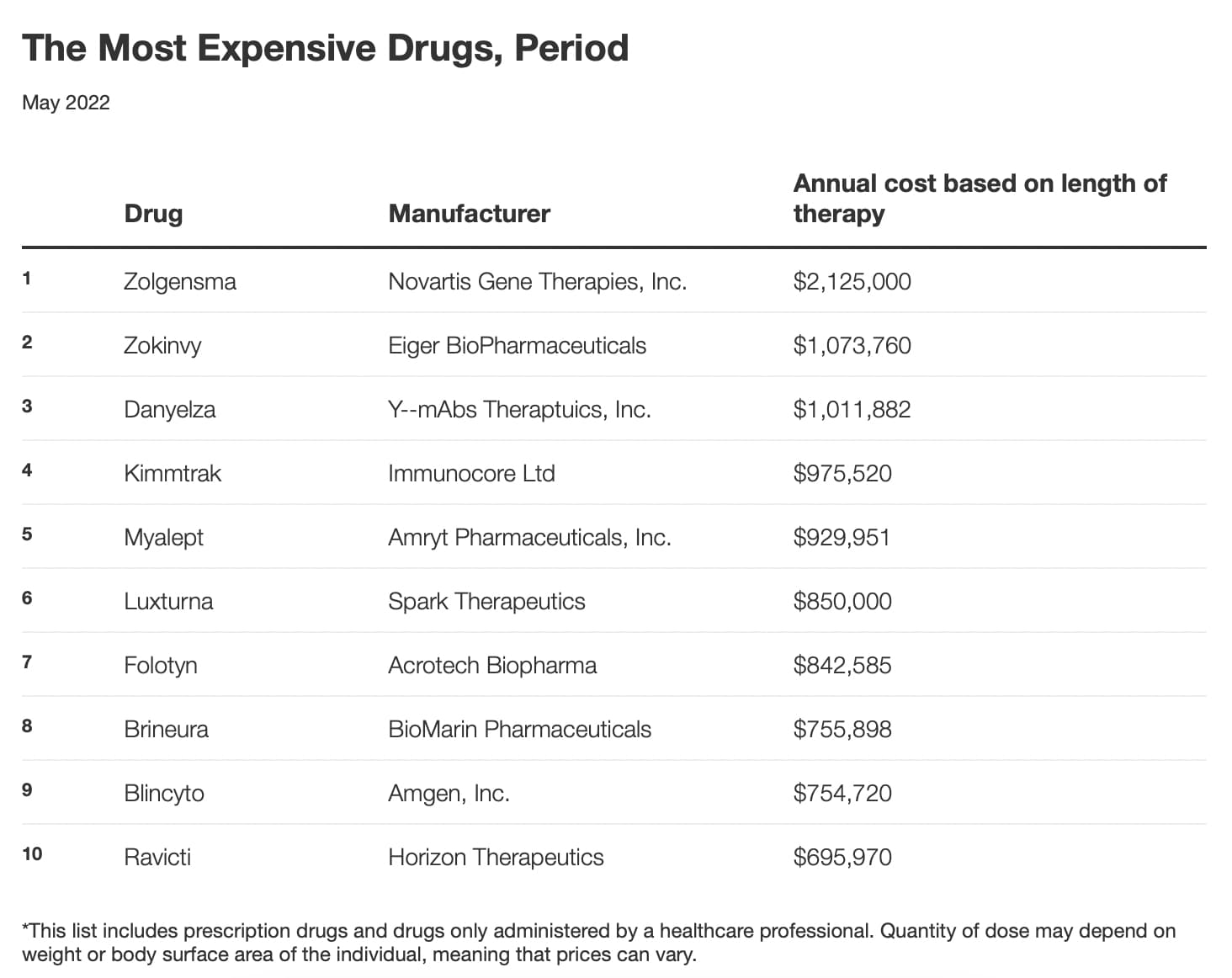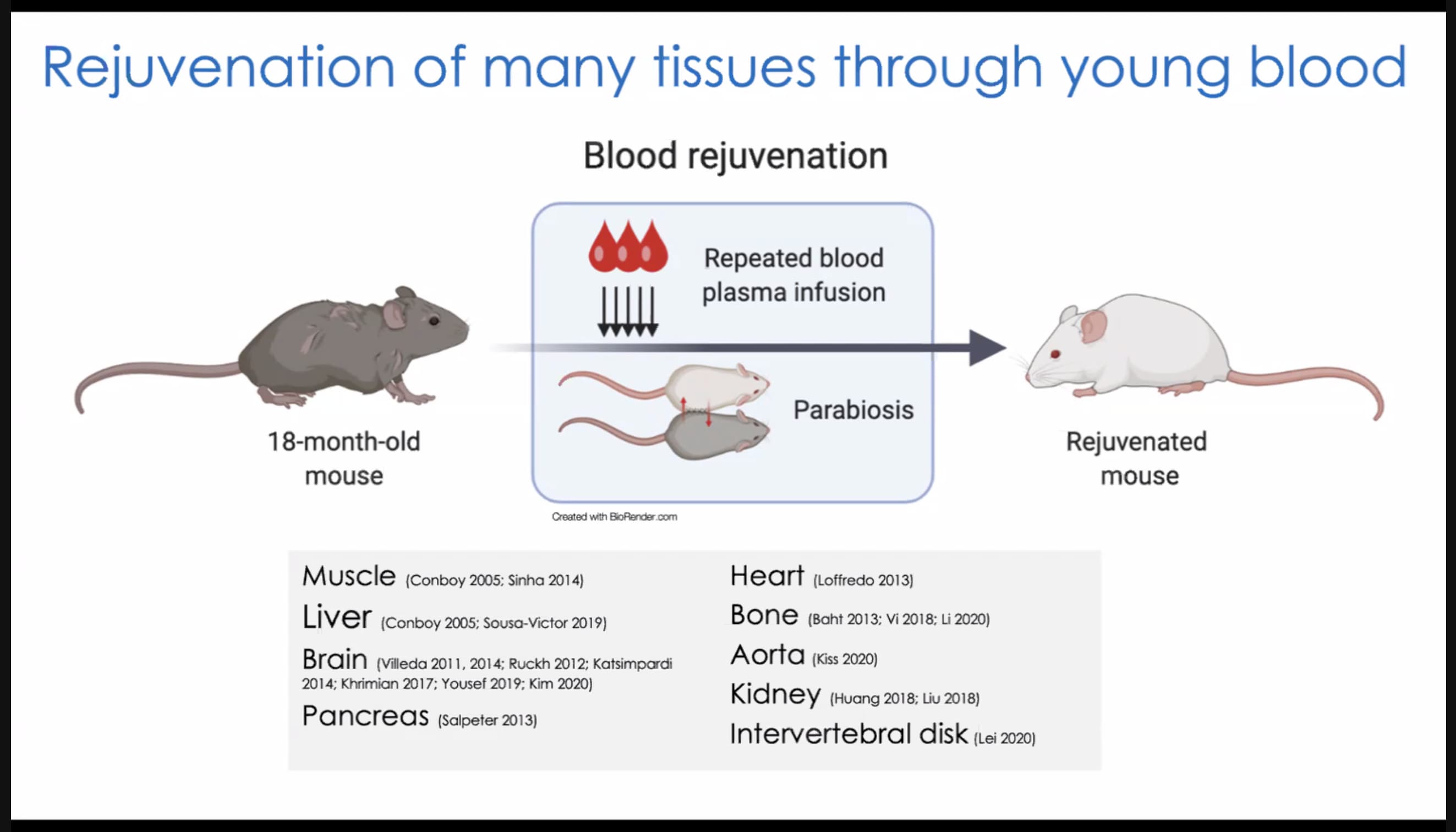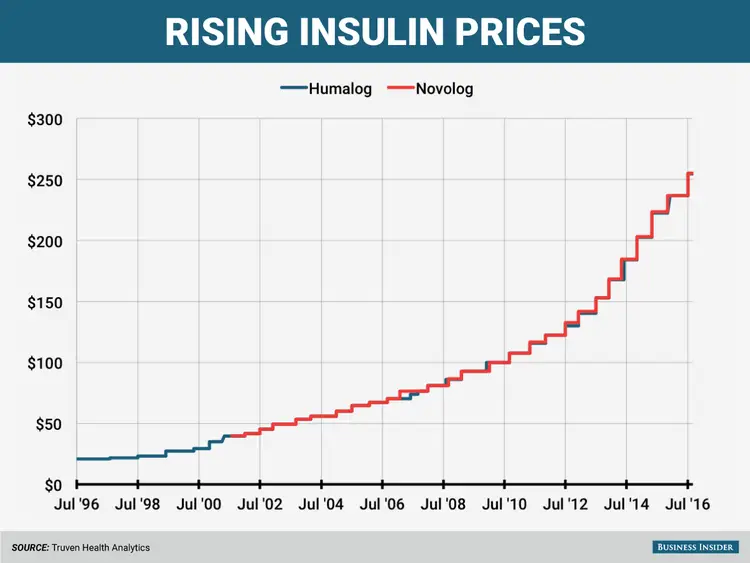A special filter is applied to create a visual effect. It’s one of the examples: TikTokers getting 'emotional' over new teenage filter
Not saying that it’s exactly the same filter, but something similar most likely. Did you notice how asymmetrical his face is especially when he smiles (not symmetrical mouth parentheses - non existent on one side and very long on the other).
Thanks - so you’re talking about a video/computer filter. I was thinking you might be talking about some sort of skin treatment.
It was a typo - wrote filler instead of filter.
I’m kinda horrified, but I can’t look away. And the thing is that I totally get it, I’d probably be doing something similar -without the tortuous procedures- if I had his resources.Watching the blood transfusion with his father and son I’m torn between moral ickiness and a feeling that what we’re seeing in realtime is the very beginning of paradigm shift in the way we view longevity. In some ways, he puts me in mind of someone like Howard Hughes, pushing aviation forward in the 1930s. Eccentric, future oriented and at the edge of the technology of his time.
He’s very quickly accumulated a ton of followers on Youtube. He’s blowing up. It looks like he’s going become the next 'longevity Guru" judging by the air time he’s getting. I’m sure he’s moving things forward and this is probably inevitable. You can guarantee that the ‘blueprint’ product lines will be starting soon, but I just think it’s still too early.
Like many, mixed feelings about this. What I do think it good about his approach and what separates him from the usual gurus is that he’s measuring everything. While taking a bucket of supplements everyday is kind of questionable and confounds analysis quite a bit, the fact that he is monitoring every type of biomarker he can find at least helps make sure that all of this is going in a net positive direction. I wish he had started small and added things one at a time, but what can I say?
I’m also intruiged because he has enough money to try some far out fringe stuff and I think that will be very interesting. Plama transfer now, but I’m sure once there are epigenetic treatments shown to be relatively safe, he might be one of the first in line.
I think Bryan Johnson is likely the model that many wealthy people will follow very soon. If his results continue to be good, as I expect they will be, and he continues to get the publicity that he’s been getting, then it will spread quickly to those who can afford it.
Like you - on the one hand this is great, as its the type of progress that we are all looking for. But it also is a perfect example of the concerns are ones I’ve written about before - in the Hevolution Foundation post I made:
People are also concerned about “unintended consequences” around longevity biotech. We see frequently that new technologies and innovations result in serious problems that were unanticipated, or ignored early on. The Internet was thought initially to level the playing field so that small businesses and individuals around the world could sell everywhere easily, but it instead greatly enabled the creation of monopolies, so companies like Amazon and Google dominate global e-commerce. Social media was developed with the goal of “building community and bringing the world closer together” but instead it frequently fosters deadly conflict and misinformation, and polarizes people with personalized information bubbles . What does society look like if the top 1% of the wealthiest have life expectancies that increase 10%, 30% or 60% faster than the life expectancy increases of the bottom 95% of the population? Prices for longevity technologies may come down over time, but the wealthy will repeatedly get the most effective and expensive therapies as they become available, so the “lifespan inequality gap” will always grow. And, of course, wealth inequality and lifespan inequality will be mutually reinforcing; the more money you have, the longer you live, the longer you live the more money you get… How long will it be before human society starts looking like that of the bee colony, where the queen bee lives 5 to 10 times longer than the worker bees ? What if longevity science identifies a technology that will allow lifespans 10X longer, but costs $10 Million in medical procedures? What if monthly $50,000 “young blood transfusions ” allowed 5X lifespan improvement? All indications are that lifespan inequality will quickly become a big problem unless specifically targeted early on.
One week later it’s on longecity and people are getting a group order together.
I have hope, though it may be unfounded hope, that aging is such a fundamental, low-level process, that interventions that target it will in the end be very straightforward and simple.
It might be extremely difficult to discover them, but I have to imagine the interventions will be closer to rapamycin or an mRNA vaccine vs the complex and labor intensive treatments we have for cancer for example.
At least I hope.
There have been many methods that have been tried in the past by rich people to no avail. I think technology evolves so fast that the average person will be able to avail themselves of it. Remember autos and computers were once only owned by the rich.
"Research in the Conboy lab has centered on enhanced rate of healing in old tissues exposed to young plasma. Their results convince them that it is not growth factors in young plasma that make the difference but rather the absence of inhibiting factors in old plasma. Simply removing blood from an older animal and replacing it with simple saline solution plus albumin was shown to enhance rates of healing (Mehdipour et al., 2020). To test this idea in humans, the Conboys have allied with Dr. Dobri Kiprov to conduct a clinical trial of blood dilution’
“How does the body know how old it is? - ScienceDirect”
Obviously, that would be fantastic if it happened. But we have dozens upon dozens of examples that it doesn’t happen… search up the most expensive medical therapies / procedures / treatments and you can see many many situations where there are great new medical solutions, that only go to a small fraction of those who need them…
Why would longevity be any different? Perhaps since aging is universal you would have more people searching for work-arounds, but many medical procedures are just very complex and costly to do and there is no workaround.
I’ll post the slides from Tony Wyss-Coray’s presentation at the Harvard Aging Symposium later - but he’s seen great results with Therapeutic Plasma Exchange and Young Blood… great improvements in all organ functioning including brain. Regular TPE is going to likely make a big difference in many aging people’s lives in the future… the optimal treatment regimen may be monthly or more frequent. At $6,000 per treatment (and the issue of being limited by the number of young blood boys you can get the blood from) suggests that it will be expensive for many years… I don’t see anyone at Longecity coming up with quick and dirty and cheap replacements any time soon…
More Examples below:
- Hemophilia B therapy costs $3.5 million per dose
- More gene therapies expected in 2023
A gene therapy considered to be the world’s most expensive drug raises questions about how to pay for it, and the federal agency overseeing Medicare and Medicaid could play a central role in ensuring patient access to potentially lifesaving medicines.
Full article: World’s Most Expensive Drug Revives Push for New Payment Models
Where are the biohacker efforts to provide low cost versions of these drugs?
The 10 Most Expensive Drugs in the US
Key takeaways:
- Zolgensma is the most expensive drug in America, with an average one-time cost of $2.1 million.
- Since September, six of the most expensive medications in the U.S. have seen a price increase.
The GoodRx Research team regularly tracks the most expensive medications filled at local pharmacies in the U.S., and drugs on that list have only gotten more expensive since we began tracking their prices. The list’s top 3 drugs — Zokinvy, Myalept, and Mavenclad — all cost over $60,000 for a typical monthly supply. However, these are the most expensive drugs filled at pharmacies, and patients self-administer them on a regular basis.
With more approvals of expensive infusions, cancer treatments, and gene therapies, we wanted to track the most expensive drugs, including those not available from a pharmacy. We call these drugs “healthcare provider-administered drugs,” because only a medical professional can administer them.
Many of the most expensive drugs are taken for an extended period of time, and costs quickly add up. This analysis ranks drugs by their annual cost for a typical course of therapy. Prices are based on the drug’s list price — which is the price that the pharmaceutical company assigns as an official price to a drug — then adjusted for the annual timeframe to create a comparable benchmark.
See full article: 10 Most Expensive Drugs in the US, Period - GoodRx
Why do you think these pricing trends of the past 30 or 40 years are going to change any time soon?
(from the Financial Times of London):
How quickly have the prices for these treatments come down in the past 10 or 20 years? How many people go without?
Top 10 Most Expensive Surgeries
Surgical interventions are the most expensive procedures. Their cost is estimated not only by the complexity of the procedure, the equipment used, etc. but also by preliminary training, postoperative rehabilitation, the work of maintenance personnel, etc. Some operations are so expensive that they can cause a small personal financial crisis, even with insurance. Only a large wallet (really big) and a bit of luck will save here. Today we are speaking about the top 10 most expensive surgeries in the world.
10 medical procedures that cost way too much
7. Open heart surgery ($324,000)
Sometimes the heart needs to undergo some operations since many factors affect its health. As they say, sometimes prevention is needed, and sometimes – repair. The range of open-heart surgery starts from installing a new artificial heart valve to working in the coronary artery to improve blood flow. The complexity and danger of the operation depend on the specific procedure. The costs depend on this, as well as on the time of preparation before and rehabilitation after surgery. And do not forget about constant monitoring by doctors.
5. Bone marrow transplant ($300,400 – $676,800)
Bone marrow transplantation is not a very complicated procedure. Depending on the donor, surgery may not even be necessary. Bone marrow can be obtained by transfusion of a patient, only intravenous access is needed. Large costs are obtained in research in the laboratory: the study of bone marrow to find a donor, its collection, testing. Another problem is the donor. If the procedure can be almost painless for the patient, then the donor will have to undergo a rather painful procedure (larger needles in the bone), moreover, this pain can remain for several weeks.
3. Heart transplant ($997,000)
A heart transplant is a surgery to remove a patient’s diseased heart and replace it with a healthy heart from a deceased donor. The danger, of course, is also very high. As in the case of the lungs, we need equipment that will temporarily replace the heart and pump blood through the body. Long preparation, rehabilitation, medications – all this makes the operation very expensive.
2. Transplantation of the “Heart-lungs” complex ($1,148,400)
A heart/lung transplant separately is a very risky operation, and a complex transplant doubles the danger. The main expenses (except for donor organs) are hospital expenses, diagnostics, and laboratory tests. After the operation, an active and complex rehabilitation will be required.
There are many articles describing many patients who changed as individuals after a heart transplant, becoming more like those who owned a new heart than themselves. Some people believe in a soul that lives in your heart, others consider it fiction.
1. Gastrointestinal transplant ($1,206,000)
The gastrointestinal tract is the longest organ in man. The complexity of the operation is that it takes a very long time until section by section is removed. Most often, one can get onto the operating table due to intestinal cancer, a serious injury or a defect, and sometimes due to a particularly vicious infection.
The operation can take a whole day and requires long and serious care after it.
When transplanting the intestinal tract, there may be a need for a liver transplant, as it also suffers greatly due to local problems. The largest expenses (up to $800,000) can go to hospital expenses: research, preparation and postoperative care.
Source: Top 10 Most Expensive Surgeries | High Point Surgery Center Review
Longevity has 3 big things going for it in terms of cost:
- Addressable market is everyone on earth. You don’t have the problem where the entire development of a drug is divided between a small number of rare disease patients
- It’s probably not going to be treated with surgery. Surgeries are expensive due to the physical realities of the procedure and the many hands-on hours needed to complete it. Longevity interventions will likely be at the molecular or genetic level.
- Every insurance company and socialized medicine system in the world will want and maybe even insist its people get this treatment to avoid the expenses of paying for the diseases of old age which consume the vast majority of their costs. If the cost is artificially too high, many places around the world will likely just break the patents or find an alternate path to acheive the same outcome. The financial benefit of having a treatment that cuts cancer, alzheimers, and heart disease by 90% is just too big.
Lol, we all have a shelf that looks like that, right?
Carnac the Magnificent…
The answer before the question is asked.
I see, government regulations ASAP…as people advertise/posting about private one to one blood component sharing.
It will not take long.
Okay, okay! ![]() But, those are pretty specialized cases representing the few, not the masses.
But, those are pretty specialized cases representing the few, not the masses.
Some are are more niche, some broader… heart disease is the number one killer…
And while @A_User is right that there will be situations where biohackers may be able to duplicate the therapy much cheaper for a small group of biohackers and their families, it doesn’t scale to larger percentages of the population simply due to Intellectual Property laws…
Look at all the IP that Stanford University, Tony Wyss-Coray and Griffols have around Plasma, and TPE etc. They aren’t going to just take mass copying or use of these protocols, and knowledge without some compensation… we have an entire legal system set up to manage this type of thing, its not just going to go away.
So the biohacker approach may work for many of us here in this forum, it doesn’t address the 99.99% of the population that isn’t a biohacker, doesn’t want to be a biohacker, and doesn’t live in areas like the SF Bay Area or Boston or London (or academic centers where there are adventurous biology PHDs) where there is a critical mass of bioengineering expertise to be able to leverage this type of knowledge.
And… this is real today… here is a slide from Tony Wyss-Corray’s presentation today, good results from multiple therapeutic plasma exchange (plasmapheresis)… in recent clinical trials. If it improves things for peole with PD and Alz, there is a very high likelihood that its going to boost the performance of non-diseased people…
And TPE results in thousands of proteins transffered via Albumin… this is not something that is going to be made synthetically by biohackers any time soon.
Tony mentioned the potential to be doing TPE on a daily basis or every few days… to get maximum benefit. How many people will be willing to pay $150,000/month to do this?
And its not like prices have come down much for Plasma Exchange. Its been around for 20 years+, its widely used in many serious conditions, and its still priced in private clinics at $6,000 per session.
This is available to Bryan Johnson today… how long will it be before you have access to this at a price you can afford, do you think?
See full presentation here (scroll down): Harvard / Glenn Aging Conference, online, Monday. May 22 - #9 by RapAdmin
There will be people that will go to Countries{India, South America, Eastern Europe and many other] will hire a person 16 to 18 year of age, pay them a few hundred dollars a week to be their “stand by” on beck and call to “donate” blood component.
This is not any sophisticated equipment, plenty of dialysis equipment available on the secondary market for .10¢ to
15¢ on the dollar.
There are personal dialysis units the size of a business brief case.
Consumables component items not that expensive.
And the entire procedure is not that difficult.
OK - lets look at these in more depth…
The total available market (TAM) is different than the total addressable market … people can’t get clean water in most of Africa, so they are out as far as addressable market, as are many other areas.
And realistically - aging doesn’t become a worry for most people until say… 40 or so. So - its really the developed world, over the age of 40. So perhaps 500 million to a billion people. This is about the same size as the diabetes market I suspect - and the price of insulin has continued to rise dramatically over the past 20 years, so simply having a large addressable market doesn’t seem to equate to lower or even decreasing costs:
It’s probably not going to be treated with surgery.
There are likely going to be all sorts of approaches - some are surgery, or other approaches like stem cell therapies, gene therapies, etc… all of which require biologicals manufacturing expertise at scale, and medical expertise to implement at the local level. I see no indication yet that these will come down in price very quickly, if at all. If Insulin, an unpatented “generic” is increasing in price at the level shown above, why would we expect these more Intellectual Property-heavy approaches to therapies to come down in price?
Every insurance company and socialized medicine system in the world will want and maybe even insist its people get this treatment.
In theory… but in practice not so much. In the US, people churn insurance companies so often that the Insurance companies don’t get any benefit from preventative approaches (so the insurance companies don’t invest in them). And in fact the trend is opposite to what you suggest:
Here: https://www.cnbc.com/2023/04/13/health-plans-could-soon-reduce-coverage-for-preventive-care.html
Here: Behind the push to strike down free preventative health care in America | On Point
And sadly, the rest of the developed world - Europe, Canada, Japan, etc. - while they have universal healthcare, they also seem to have the most conservative health care systems. How many years will it be before they cover rapamycin or therapeutic plasma exchange?
The reason drug companies seemly charge outrageous prices for some medicines is of course they sometimes spend billions to get a drug to market that only benefits a small percentage of the population and they must recoup their costs.
Heart disease generally doesn’t become a problem until you are older. Members of my family have had stents, valve repairs, and open heart bypass surgeries all paid for by their insurance. My own Medicare Plus plan would do this for me with relatively modest out-of-pocket expenses.
If drugs can be prescribed for the masses such as the Covid vaccines then the costs will be low for the individual. Early on I was worried that life-extending drugs such as rapamycin would be out of my reach. What I worry about now is that such drugs may become illegal. (Color me a conspiracy theorist ![]() )
)
Does it really matter if a billionaire can live 10 years longer and I can only live 5 years longer because he can afford more expensive treatments? Are you willing to deny everyone in the world 5 years of extra life in order to deny the billionaires of their 10? The argument that we should deny everyone longevity because some rich people will live longer is crazy. Should we stop developing medicines because not everyone can afford a gastrointestinal transplant?
There will be unaffordable longevity interventions and there will always be rich people. But there will also be affordable longevity interventions for the masses (Rapamycin?) You will never be the oldest or wealthiest person in the world. Enjoy what you have and what you can get. Some rich billionaire living to 250 is fine with me as long as I can live to 235. Your life will be of a higher quality than most of theirs anyways. ![]()
Chris,
You’re a finance guy, right?
Life extension therapies are a little like monthly compound interest. At some point, the more frequent and better therapies you get, the better your “total return” (or lifespan).
I’m thinking long term… what if a group of people can lock in a 15% to 35% annual compounded rate of return, while the vast majority of the people can only get 1% to 5%? Over 20 to 50 years what would happen to the relative wealth of those people, if the people getting the highest return already have the greatest amount of money?
So - I’m more concerned about the next 50 years, for society. …
In the Silicon Valley we are all about predicting the future, and trying to see where things are going, and what the opportunities and challenges will be. I can’t see this not becoming an issue. Bryan Johnson is just the start I suspect… of a major wave of activity. Just something we need to watch for I think.





